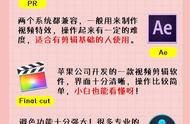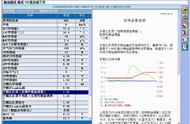所谓转换法(也称转译),是指翻译过程中由于两种语言在语法和习惯表达上的差异,在保证原文意思不变的情况下,译文必须改变词类或词在句子中的作用,以使译文符合目标语的表述方式、方法和习惯而对原句中的词类、句型和语态等进行转换。转换法是翻译中最为常用的一种变通手段,是突破原文词法、语法与句法格局,化阻滞为忠实、通顺的重要技巧。。它不仅指词类的改变,而且还包括词类作用的改变和一定词序的变化,当然主要是词类的变化。
By conversion we mean that in translation a word in one language belonging to a certain part of speech is not necessarily to be turned into one of the same part of speech in another language. We cannot translate English mechanically word for word into Chinese. A good translator should try by all means to reproduce the thought of the author faithfully in another language, quite disregarding the parts of speech of individual words so used in his version. In practical translation work, words identical in meaning but different in part speech and the word order may also be changed.

一般说来,在翻译过程中词类转换是没有限制的,也就是说可以把名词转换为代词、形容词、动词;把动词转换成名词、形容词、副词、介词;把形容词转换成名词、动词、副词和短语。从实践来看,词类转换主要涉及到名词和动词之间的转换、介词与动词之间的转换、形容词和名词之间的转换、形容词和副词之间的转换等。例如:
1.Too much exposure to TV programs will do great harm to the eyesight of children.
孩子们看电视过多会大大地损坏视力。(名词转动词)
2. 由于我们实行了改革开放政策,我国的综合国力有了明显的增强。Thanks to the introduction of our reform and opening policy, our comprehensive national strength has greatly improved. (动词转名词)
3. I'm all for your opinion.
我完全赞成你的意见。(介词转动词)
4. The reform and opening policy is supported by the whole Chinese people.
改革开放政策受到了全中国人民的拥护。(动词转名词)
5. In his article the author is critical of man's negligence toward his environment.
作者在文章中,对人类疏忽自身环境作了批评。(形容词转名词)
6. 学生们都应该德、智、体全面发展。All the students should develop morally, intellectually and physically. (名词转副词)
7. 语言这个东西不是随便可以学好的,非下苦功不可。
The mastery of language is not easy and requires painstaking effort. (动词转名词、副词转形容词)
8. 林则徐认为,要成功地禁止鸦片买卖,就得首先把鸦片焚毁。
Lin Zexu believed that a successful ban of the trade in opium must be preceded by the destruction of the drug. (动词转名词)
9. 徐悲鸿画马画得特别好。
Xu Beihong’s drawings (paintings) of horses are exceptionally good. (动词转名词)
10. The music is a gas.
这音乐妙极了。(名词转形容词)
11. Saud was a frustrated man at that time.
沙特那时已受挫折。(形容词转动词、定语转谓语)
12. Traditionally, there had always been good relations between them.
它们之间一直有着传统的友好关系。(副词转形容词、状语转定语)
13. We are enemies of all wars, but above all of dynastic wars.
我们反对战争,特别是王朝战争。(名词转动词)
14. A man of talent is usually honest and modest.
有本领的人往往老老实实。
15. It is impossible to live in society and be independent of society.
生于社会,不能脱离社会。(形容词转动词)
16. "Coming!" Away she skimmed over the lawn, up the path, up the steps, across the verandah, and into the porch.
"来啦!"她转身蹦跳着跑了,越过草地,跑上小径,跨上台阶,穿过凉台,进了门廊。(介词转换成动词)
17. Highway and air traffic came to a standstill in most of Eastern Washington.
华盛顿州大部分地区的公路交通和空中航线都已陷入停顿。(名词转换成动词)

词在句子中的作用转换,也就是它的语法功能和句子成分的转换,通常是把主语变成状语、定语、宾语、表语;把谓语变成主语、定语、表语;把定语变成状语、主语;把宾语变成主语等。 例如:
1、非主语译成主语
(1)介词的宾语译成主语。例如:
1)There are four seasons in a year.
一年有四季。
2)Now, heat is being added to the substance.
现在这种物质正在加热。
3)At least two quarts of water are required daily by a normal individual.
一个正常的人每天至少需要两夸脱的水。
4)High-quality machines of various types are produced in our country.
我国生产各种类型的优质机器。
(2)动词宾语译成主语
这种宾语在意义上跟主语有比较密切的联系,通常是主语的某一部分或某一属性。例如:
1)An automobile must have a brake with high efficiency.
汽车的刹车必须高度有效。
2)Water has a density of 62.4 pounds per cubic foot.
水的密度是每立方英尺62.4磅。
(3)表语译成主语
1)A crystal receiver is a less complicated structure than a valve receiver.
晶体收音机的结构不像电子管收音机那么复杂。
2)Ice is not so dense as water and therefore it floats.
冰的密度小于水,因此能浮在水面上。
3)Two widely used alloys of copper are brass and bronze.
黄铜和青铜是两种广泛使用的铜合金。
2、非谓语译成谓语
(1)定语译成谓语
动词“have”的宾语移作主语时,一般需要把该宾语的定语译成谓语,原来的谓语have省略不译。例如:
1)Manganese has the same effect on the strength of steel as silicon.
锰对钢的强度的影响和硅相同。
2)The wings have controllable sections known as ailerons.
机翼上可操纵的部分叫做副翼。
3)Solids have a shape independent of the container.
固体的形状与容器无关。
(2)主语译成谓语
1)A glance through his office window offers a panoramic view of the Washington Monument and the Lincoln Memorial.
从他的办公室窗口可以一眼看到华盛顿纪念碑和林肯纪念碑的全景。
2)A view of Mt. Fuji can be obtained from here.
从这里可以看到富士山。
3)His very appearance at any affair proclaims it a triumph.
任何场合,只要他一露面,就算成功了。
以上作为句子主语的名词往往是含有动作意味的名词,或动词派生的名词。
(3)表语译成谓语
英语中的某些形容词、副词、介词、名词接介词短语等在句中做表语时,通常可译成动词谓语。例如:
1)The fact that she was able to send a message was a hint.But I had to be cautious.
她暗示我能够给我带个信,但是我必须小心谨慎。(形容词译成谓语)
2)As he ran out, he forgot to have his shoes on.
他跑出去时,忘记了穿鞋。(副词译成谓语)
3)This explanation is against the natural laws.
这种解释违反自然规律。(介词译成谓语)
4)We were on the supposition that they could improve the complex machine.
我们认为他们能改进这台复杂的机器。(介词短语译成谓语)
3、非宾语译成宾语
1)When power is spoken of, time is taken into account.
说到功率时,总是把时间计算在内。
2)Mr. Billings cannot be deterred from his plan.
(人们)不能阻止比凌斯先生实行他的计划。
4、非定语译成定语
(1)主语译成定语
为了强调英语句中某一个成分,把它译成主语,再将英语的主语译做汉语中的定语。例如:
1)How many electrons has a magnesium atom in its outer layer
镁原子的最外层有多少个电子?
2)Various substances differ widely in their magnetic characteristics.
各种材料的磁特性有很大不同。
3)Without air, the earth would undergo extreme changes in temperature.
没有空气,地球的温度会发生极大的变化。
(2)状语译成定语
英语中位于句首的某些状语(多为地点状语),有时可译成汉语的定语。例如:
1)In this world, things are complicated and are decided by many factors.
世界上的事情是复杂的,是由各方面的因素决定的。
2)Throughout the world, oil consumption is growing rapidly.
全世界的石油消耗量正在迅速增长。
从上述的大部分例句中可以看出,在翻译过程中若涉及到转换法时往往会同时改变某些词的词性及其在句子中的语法作用。
(3)其它句子成分的转换。例如:
1)If children are so well able to learn their mother tongue, it is precisely because they plunge themselves into the sea of language instead of reading a few textbooks only.
孩子们之所以能把自己的母语学好,恰恰是因为他们投身于语言的海洋之中,而不单单是读几本教科书而已。(条件状语转换成结果状语)
2)You can mass-produce … incredible quantities of facts and figures. You cannot mass-produce knowledge, which is created by individual minds, drawing on individual experience, separating the significant from the irrelevant.
你可以大批制造……数量惊人的事实与数字,但不可能大批生产知识,因为知识是个人头脑用个人经验,经过去伪存真后创造出来的。(定语从句转换成原因状语从句)













